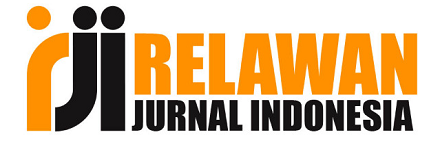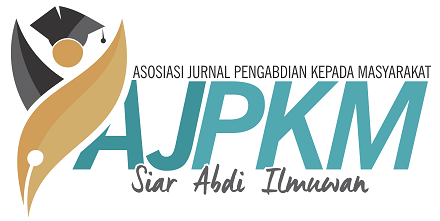Pengembangan dan peningkatan kualitas usaha kerajinan berbasis limbah kayu jati
DOI:
https://doi.org/10.33474/jipemas.v4i1.9108Keywords:
crafts, wood waste, souvenirsAbstract
The problem is the abundance of untapped teak wood waste that has an impact on environmental pollution. The purpose of this community service activities is to develop an agro-industrial area and become a marketing platform for wood waste processing products. The service activities include: (1) programing preparation and socialization stage, (2) programing and to do exhibition assistance training, (3) monitoring and evaluation, (4) Marketing and promotion. The results obtained from processed teak waste are in the form of vehicle souvenirs such as cars, vespa, motorbikes, rickshaws, mineral water containers, fruit containers, and ashtrays which have been exhibited as superior products at the sub-district level. This program is implemented by UPN Veteran East Java together with Soerja Ngawi University and the Ngawi Food Security Agency. Activities carried out include comparative studies, mentoring, apprenticeship, procurement of tools and training for making souvenirs from waste, and marketing for groups of craftsmen. Waste processing is beneficial for the community in increasing knowledge and skills, increasing community income, and making the regional superior product of Ngawi Regency. Environmental pollution can be overcome by utilizing waste into superior products.References
Budyawati, Il. P. I., & Finali, Z. (2018). Pemanfaatan Limbah Produksi Mebel Menjadi Alat Permainan Edukatif Dengan Pemasaran Berbasis Website di Desa Kemuning Lor Jember Tahun 2017. E-Journal Warta Pengabdian, 11(4), 177–185. https://doi.org/10.19184/wrtp.v11i4.7245
Eskak, E. (2013). Potensi Seni Kriya Istimewa Dalam Pameran “Negari Ngayogyakarta Hadiningrat 2012.†Corak, 1(2), 133–142. https://doi.org/10.24821/corak.v1i2.349
Eskak, E. (2016). Pemanfaatan Limbah Ranting Kayu Manis (Cinnamomun Burmanii) untuk Penciptaan Seni Kerajinan dengan Teknik Laminasi. Dinamika Kerajinan Dan Batik: Majalah Ilmiah, 31(2), 65. https://doi.org/10.22322/dkb.v31i2.1068
Khanifah, U., Fathoni, A., & Magdalena M, M. (2018). Pengembangan Sumber Daya Manusia Pada Pengerajin Mebel Limbah Kayu Dengan Analisa SWOT (EFAS-IFAS) (Studi kasus: Pengrajin Mebel Limbah Kayu Desa Kangkung, Kec. Mranggen, Kab. Demak). Journal of Management, 4, 1–22. http://jurnal.unpand.ac.id/index.php/MS/article/view/1147/1119
Murphy, J. ., Smith, P. M., & Wiedenbeck, J. (2013). Wood residue utilization in Pennsylvania: 1988 vs. 2003 [2007]. AGRIS, 57(4), 101–106. https://agris.fao.org/agris-search/search.do?recordID=US201300768875
Raharjo, T. (2011). Seni Kriya dan Seni Kerajinan (Otok Herum Marwoto (ed.); Pertama). Percetakan kanisius.
Rani, H. (2016). Pengolahan Serbuk Kayu Menjadi Bahan Mebel. Jurnal Proporsi, 2(1), 1–12. https://doi.org/10.22303/proporsi.2.1.2016.01-12
Ratniarsih, I., & Santoso, N. A. (2013). Pemanfaatan limbah potongan kayu jati untuk penyekat ruang non permanen. Simposium Nasional RAPI XII - 2013 FT UMS, 128–134. http://hdl.handle.net/11617/4082
Utomo, T. P., Suyasa, I. N., & Haryanto, E. S. (2018). Pengembangan Desain Produk Kerajinan Berbahan Limbah Kayu di Klaten. Abdi Seni, 9(1), 37–42. https://doi.org/10.33153/abdiseni.v9i1.2454
Waisnawa, I. G. N. S., Sudana, I. M., & Swaputra, I. B. (2016). Kerajinan Berbahan Limbah Kayu (Driftwood) dan Evaluasi Tata Letak Fasilitas Kerja. Bhakti Persada Jurnal Aplikasi IPTEKS, 2(1), 21–28. http://ojs.pnb.ac.id/index.php/BP/article/view/548
Downloads
Published
How to Cite
Issue
Section
License
.









